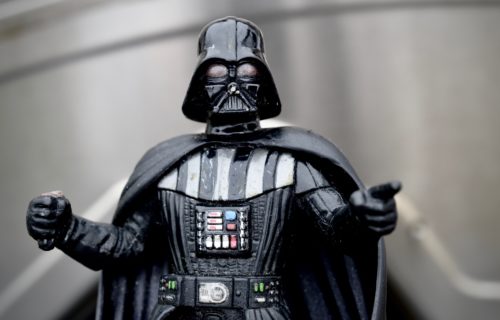ANN ARBOR, Mich. — From Darth Vader to Deadpool, movie audiences often end up more fascinated by the villain than the hero. What makes us so quick to idolize characters like Tony Soprano or Walter White? An interesting new study by a team at the University of Michigan finds people just can’t help but see some good in the bad guys.
Put another way, viewers usually perceive villains as being more complex and capable of redemption. Typically tortured by some type of internal strife or past tragedy, it isn’t all that difficult to imagine that many villainous characters are just as tragic as they are nefarious. Most heroes, on the other hand, normally come across as fully good with little room for anything else in movies and books.
During the study, both adults and children said that villains were inwardly good more often than heroes were inwardly bad.
“In other words, people believe there is a mismatch between a villain’s outward behaviors and their inner, true self, and this is a bigger gap for villains than for heroes,” says lead study author Valerie Umscheid, a U-M psychology doctoral student, in a university release.
Villains are just a little more mysterious than heroes
Researchers say there are more layers to pull back. Even if the villain is heinously egotistical, power hungry, or greedy, many people still search for humanity in these characters.
The team conducted a total of three experiments to reach these findings, encompassing 434 children (ages 4-12) and 277 adults. Researchers focused on ascertaining how people make sense of antisocial acts committed by evildoers. This was achieved by observing and analyzing each person’s judgments of both familiar and novel fictional villains and heroes. Examples include Disney’s Ursula from “The Little Mermaid” and Pixar’s Woody from “Toy Story.”
The first experiment established that kids viewed the villain’s actions and emotions as overwhelmingly negative. This finding indicates that children’s tendency to generally judge people as good does not prevent them from recognizing extreme forms of villainy.
The next two experiments investigated both children’s and adults’ beliefs regarding heroes’ and villains’ moral character and true selves. Study authors did this using various pieces of converging evidence, including how a character felt inside, whether a character’s actions reflected their true self, and whether a character’s true self could possibly change over time.
Ultimately, the findings showed that both kids and adults consistently evaluated the villain’s true self to be overwhelmingly evil and much more negative than the hero. It makes sense however, the team also noted an “asymmetry in the judgments.” Participants said villains were more likely than heroes to have a true self that differed from their outward, evil actions.
For instance, both adults and children said a character like Ursula had some inner goodness, despite her usual immoral actions.
The research is published in the journal Cognition.

